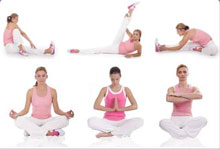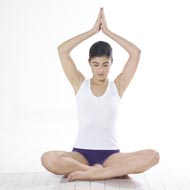- Raja yoga
- Yoga Stretches
- Jivamukti Yoga Poses
- Yoga Tree Pose
- Sun and Moon Yoga
- Wind Removing Pose
- Hare Pose
- Accomplished Pose
- Urdhva Mukha Pinch Mayurasana
- Revolved Abdomen Pose
- Raised Foot Pose
- Scorpion Pose
- Butterfly Pose
- Half Tortoise Pose
- Revolved Twist
- Balancing Stick Pose
- Cat Pose
- Supported Shoulderstand
- Crane Pose
- Handstand
- Happy Baby Pose
- Firefly Pose
- Scale Pose
- Side Plank Pose
- Upward Facing Two-Foot Staff Pose
- Reclining Big Toe Pose
- Stick Pose
- Revolved Head-to-Knee Pose
- Full Boat Pose
- Upward Extended Feet Pose
- Yoga arm balance poses
- Core Yoga
- Inversion Yoga Poses
- Seated And Twist Yoga
- Horse Pose
- Cobbler Pose
- Seated Wide Angle Pose
- The Compass Pose
- Bound Half Moon Pose
- Lotus Pose
- Reverse Warrior Pose
- Fixed Firm Pose
- Back-bend Poses
- Forward bend Poses
- Sarvangasana
- Ashtanga Yoga Poses
- Warm up poses
- Seated Poses
- Seated Forward Bends
- Chair Poses
- Standing Poses
- Standing Balancing poses
- Yoga Asanas
- Hatha Yoga Asanas
- Yoga Postures Online
- Partner Yoga Poses
- Anusara Yoga Poses
- Advanced Yoga poses
- Restorative Yoga Poses
- Kids Yoga Poses
- Beginning Yoga Postures
Half Crow Pose
The spiritual analysis of life's design requires an ardent intellect and a strong will. Yoga is a simple, normal programme that includes five main principles: exercise, breathing, diet, meditation, and positive thinking.
Half Crow Pose or Ek Pada Bakasana is also called the One Legged Crane Pose.
The Half Crow Pose is one of the most beneficial of the balancing poses, and is definitely one of the hardest yoga poses. It takes ample patience, strength, discipline, time and attention to master it. However, with a firm routine and discipline, the pose becomes easier to practice. The Half Crow Pose strengthens the arms, wrists, shoulders and promotes physical and mental balance.
Steps
The Half Crow Pose Steps are as follows:
- Come into a low squatting position with the feet and knees wide apart. Spread the fingers wide apart. Place the palms flat on the floor; rotating the hands so that the fingers are pointing inwards. Your hands should be between the legs and directly beneath the shoulders.
- Move into in a shorter stance of the Adho Mukha Asana or the Downward Facing Dog. Lift the right leg up in the air as you bend the knee, and place it on the outer edge of your right arm as high as possible. Bend the elbows and keep looking forward. Hips high in the air, slowly move your left foot such that you can elevate the hips. It is very important to keep the hips elevated at all times. Hold this position for a few breaths.
- Keep bending the elbows and keep moving the back foot until it lifts. Engaging the lower belly, slowly extend the back leg as soon as it lifts off the ground. Make the leg straight and spread the toes as you hold it high up. The back should be rounded with elbows tight and eyes fixed straight ahead. Your right knee should be placed firmly on your upper arm.
- Release and repeat on the other side.
Precautions
Some of the precautions associated with the Half Crow Pose are as follows:
- Avoid the Half Crow Pose if you have shoulder, back or spine injuries. People who have suffered from shoulder dislocation should skip this pose altogether.
- Take care if you have carpal tunnel syndrome as there is a lot of pressure placed on the wrists when executing this pose. Consult your doctor before attempting the pose.
- The Half Crow Pose is not advisable for pregnant women and for people suffering from hypertension.
- Also, while practicing the pose, do not move too fast and keep your hands fully grounded to retain balance.
- Do not hold the breath and avoid squeezing the neck or shoulders.
Beginner’s Tip
Keep your eyes focussed and keep breathing easy to relax the muscles. Beginners should try to perfect the Crow Pose first to improve the balance in the body. In the Crow Pose, keep the heels and buttocks together and press the upper arms across the shins and draw the groin into the pelvis to help with the lift.
Some people may find it hard to lift off from the floor when attempting the Half Crow Pose. It can be helpful in the beginning to squat on a block or any other elevated surface to keep the feet a few inches off the floor.
Benefit to Body Parts
The Half Crow Pose has the following effect on different body parts.
- The Half Crow Pose conditions the arms and the shoulders. It is particularly effective in strengthening the wrists when done correctly over a period of time.
- It increases breathing capacity by expanding the chest.
- The muscles of the fingers, wrists, and forearms are stretched.
- The pose increases abdomen strength and tones the internal organs.
- It opens up the thighs.
- This pose improves the overall body muscle co-ordination.
- The Half Crow Pose provides a good stretch to the back and groin.
- This pose also stimulates the digestive organs.
Therapeutic Applications
The following are the therapeutic application of the Half Crow Pose:
- The Half Crow Pose helps to increase the power of concentration.
- It boosts physical and mental balance.
- The pose helps removes lethargy and energizes the body.
- The Half Crow Pose helps build confidence and reduces stress.
- The Half Crow Pose aids and improves digestion.
- The pose helps relieve lower back pain.
Variations
- Crow Pose II or Ek Pada Bakasana II is the simple variation of the Half Crow Pose. Start from the beginning and place one arm in front of one shin and the other leg on top of the other arm. Reach forward and lift the hips by pressing both the legs against their respective arms or move the back leg forward from Half Crow Pose and press it against the top of the shoulder or arm. Press both legs down against the arm.
- Alternatively, Mayurasana, the Peacock Pose, can also be done as a variation to the Half Crow Pose. The Peacock Pose is an even harder pose and should be practiced only after you have mastered the Half Crow Pose.
Preparatory Poses
The preparatory poses for the Half Crow Pose are as follows:
- Downward Facing Dog (Adho Mukha Svanasana)
- Cobbler’s Pose (Baddha Konasana)
- Child’s Pose (Balasana)
- Hero Pose (Virasana)
- Plank Pose (Uttihita Chturanga Dandasana)
Follow Up Poses
Some of the follow-up poses for the Half Crow Pose include the following. These help counter the stretch.
- Four Limbed Staff Pose (Chaturanga Dandasana)
- Plank Pose (Uttihita Chturanga Dandasana)
- Downward Facing Dog (Adho Mukha Svanasana)
The Half Crow pose can be very intimidating at the start, so it is important not to get disheartened if you cannot get it right the first time. Practice, consistency, and the willingness to endure will eventually enable you to lift the feet off the floor. It also helps to perform this pose under the guidance of an instructor. He/she will be able to help you lift your legs and will also ensure that you do not injure yourself while performing the pose.
 Find Pose
Find Pose

